There is danger lurking in every garden. It doesn’t take much of a brush with poison ivy to sideline the most passionate gardener. A horde of angry bees can do the same. The leaves of tomatoes and datura are poisonous-never mind the mushrooms that spring up here and there. But given my zone that features a long and often bitter winter, my focus is much more about the dangers that pose a threat to my gardens. The landscape around me, both public and private is on fire now-it is the fall season. A good client tells me that the intensely fiery fall color is nature’s way of apologizing for what is to come.
Leaves are green when the leaf is actively producing chlorophyll. Leaves convert the energy from sunlight into energy that is food fore the plant. This is a vastly oversimplified and maybe not so perfectly accurate account, but it helps to tell the story.
Yellow, orange, red and hot pink pigments exist in leaves, but that color is masked while the plant is in active growth, and producing chlorophyll. Once the days begin to shorten, the plant responds to this slowing down of the growing season by reducing, and finally ending its production of chlorophyll.
Would that gardeners had a mechanism that sophisticated for dealing with the season coming to an end. I am outside cruising the garden now in a coat and hat, shivering, in an effort to stave off the inevitable. I value those cold temperature stalwarts the pansies as much in the fall as the spring. My Rozanne geraniums and my Japanese anemones are in full flower right now. None of their leaves are on fire-they are green as green can be.
Perennials need much less time to prepare for winter than the trees. Giant plants take months to slow down, so onc the ground is frozen, they are but a breath away from a dormant state. Hopefully they have stored plenty of energy which will sustain them throught the winter.
Our fall is associated with the fruits of the harvest. Brilliantly orange pumpkins are available everywhere right now. At market, the red, yellow and orange peppers add lots of visual heat on chilly days. The color Chinese lantern seed pods is a comfort.
Our fall color in a good year is sensationally beautiful. It is hard to believe that all of this warm color comes at a time of year when the overnight temperatures are steadily dropping. This magnolia in full fall color is an expression of yellow that rivals forsythia in the spring.
Nyssa sylvatica is a very architectural tree. Simple and unobtrusive in shape and leaf, the fall color is its glory. The tangerine and yellow orange of these leaves is a standout in a fall landscape.
This leaf from a Princeton Gold maple is singed by cold, and fungus. The process of the slowdown of chloropyll production is obvious. Danger-winter dead ahead.
Sugar maples are noted for their fiery fall color. Someday I would like to take a fall color tour in northern Michigan, or New England. But trees all over my neighborhood do a great job of making the beginning of the end of the garden bearable.
All five of these leaves came from one of my yellow butterflies magnolias. They illustrate the process by which a green leaf matures, and drops. The danger ahead? A winter that threatens the life of even the best prepared of plants. It can happen.
Gardening in a zone with harsh winters has its dangers, for plants and gardeners alike. All of the fiery signs are out there.
For more on Danger Gardens, check out the posts of other members of the Garden Designers Roundtable, and our guest writer this month, the very talented gardener Loree Bohl :
Loree Bohl : Danger Garden : Portland, OR
Pam Penick : Digging : Austin, TX
Rebecca Sweet : Gossip In The Garden : Los Altos, CA
Mary Gallagher Gray : Black Walnut Dispatch : Washington, D.C.
Lesley Hegarty & Robert Webber : Hegarty Webber Partnership : Bristol, UK
David Cristiani : The Desert Edge : Albuquerque, NM
.
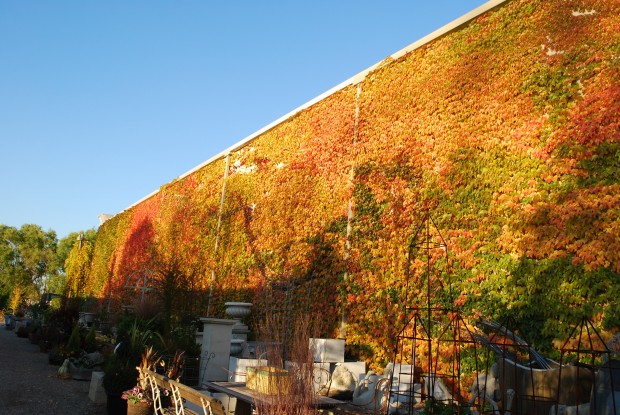


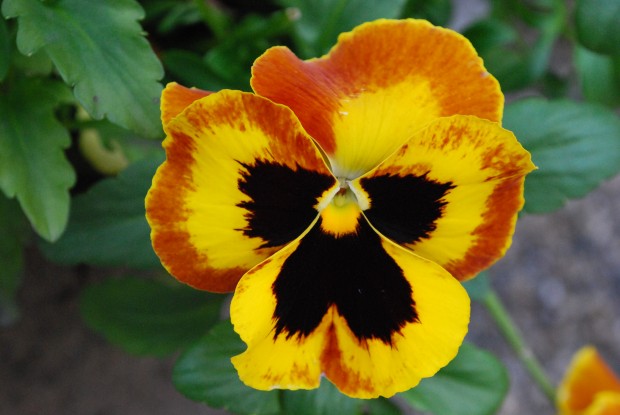
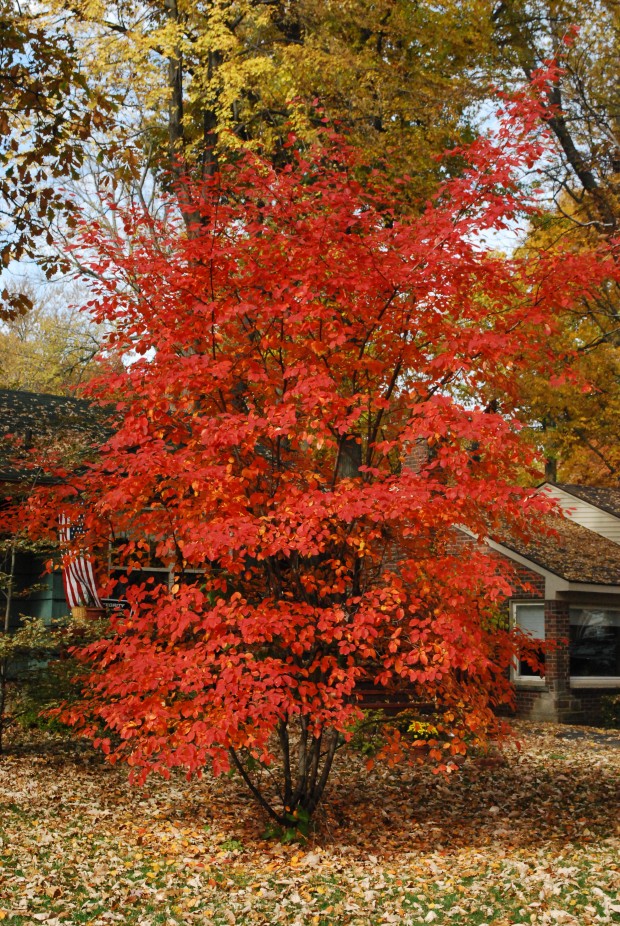

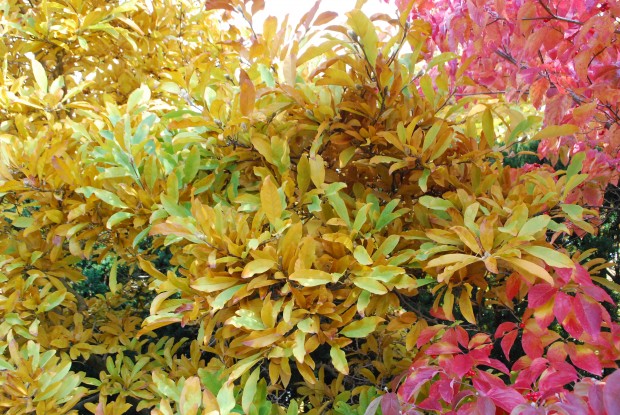
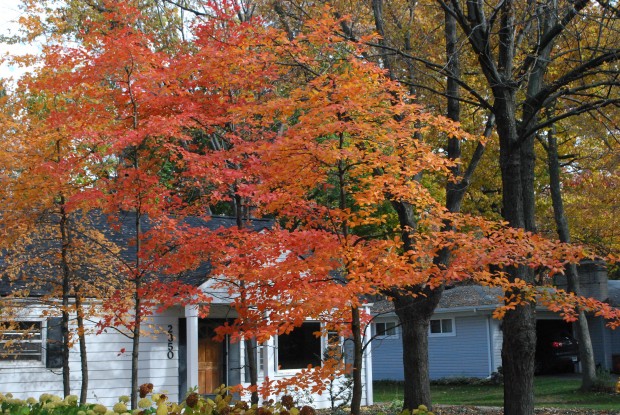
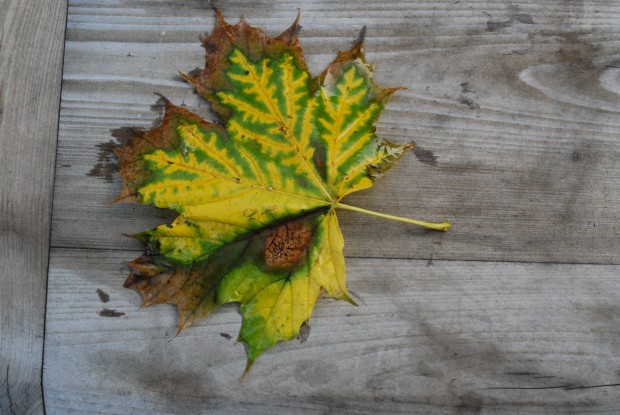
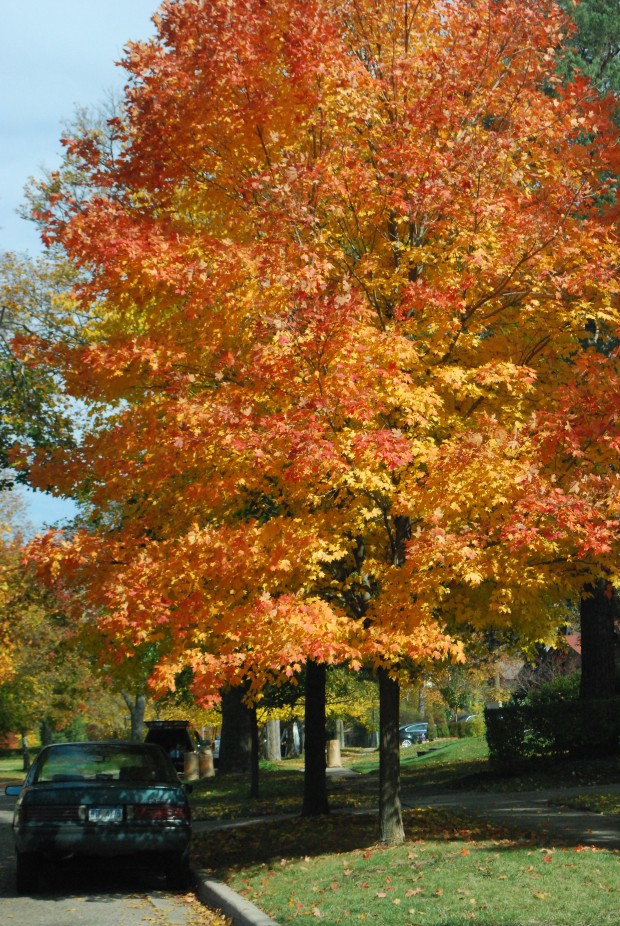

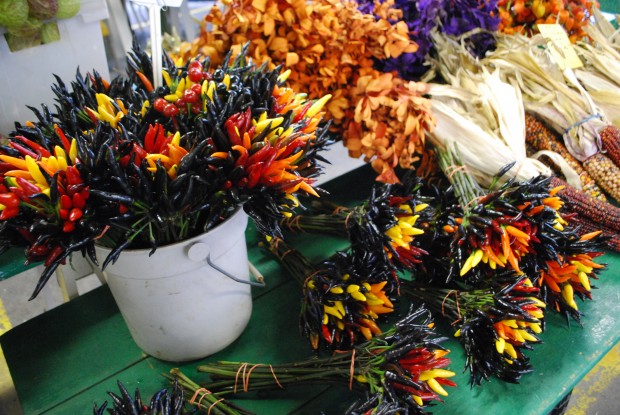
The danger I see this year: the midwest’s drought (and no doubt other parts of the country). While the last couple of months have been wetter, this year’s drought was unprecedented. Many plants managed to limp along, but it will be interesting come next spring to see if a larger-than-usual number of well-established plants fail to green out.
A beautiful reminder of nature’s way of protecting itself, and giving us all one last burst of garden energy — via spectacular color — before winter’s dangers arrive.
“the intensely fiery fall color is nature’s way of apologizing for what is to come”…oh that is very good, and it certainly rings true for me. If I could magically make winter arrive on December 23rd and leave on January 2nd I would be a very happy gardener.
I have to credit my client Jane for that remark. How true it is! Last year we really had no winter at all. My crews were back to work for the spring season in February. This winter-who knows what will be. There is legitimate concern about how the drought we have had all summer and fall will affect winter hardiness.
Beautiful pics of fall, my favorite season. It’s easy to forget that those stunning colors are in fact just a stage in the plant’s defense mechanism against the cold temps. My parents took a trip up to the Upper Pennisula in Mich. one year…drove all the way around Lake Superior. They said it was stunning. Michigan is a beautiful state.
When the fall color is good in Michigan, its unbelievably good. Most of my Dad’s family lived in the UP, so I spent a lot of time there. It is beautiful. And as much as I dread the winter, I love having 4 seasons-that’s a treat.
You got me thinking beyond what “dangerous” can mean. Your fall colors are off the chart, and like my relatives in western NY, you don’t have to travel to New England to see such things. This is apologies of things to come…here, I would add for the last 6 months. Dry heat is overrated!
David, this is the dryest hottest summer I can ever remember-and I have been gardening close to 40 years. I did not like it one bit. I would not want it again, though what I want counts for nothing! I was still watering-up until a week ago. The winter and the spring yet to come-who knows. I do know my dogwoods have not budded up as heavily as they usually do this fall. The fall color in Michigan this year-spectacular. One season at a time, yes? Deborah
What a spectacular color show! I’m fortunate to live in a climate with mild winters, but you’re reminding me there’s a price I pay – autumn here is much more muted. Clearly danger has its rewards.
Susan, gardening in my climate has lots of disappointments, given the severity of the winter. You are right, the exposure to danger (like it or not) most definitely has its rewards. Deborah
I love the line ‘the intensely fiery fall color is nature’s way of apologizing for what is to come’ – it’s so true!! And you’re right – fire is definitely dangerous. Thanks for the gorgeous photos! I’m enjoying your post all the more as fall colors have yet to make their appearance here in California.
Dear Rebecca, Michigan is a landscape all its own- a special narrative particular to this place. Just like California is a landscape and narrative all its own. What i like the best-gardeners with different narratives have lots to share. Thanks for writing, Deborah
Love your ode to fall, Deborah! My favorite part is that photo of the yellow butterflies Magnolia leaves all lined up in their varied glory. Great post!
Those leaves are amazing-I can’t believe how big they are. We have had a beautiful fall.
Your post is a unique take on this month’s topic, Deborah, and very evocative of what it’s like to garden in a much different climate than my own mild-winter region. We’ll finally get a little fall color, such as it is, in December, and spring arrives soon after. We Deep South gardeners still fret about the possibility of frost though, as we’re always pushing our zone. Danger lurks in every garden.
Dear Pam, danger does lurk in every garden-in one form or another. Fall color in December, and spring shortly thereafter-I can’t imagine. Thanks, Deborah